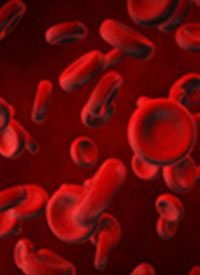Article
Very Low Dose Radiation Therapy Demonstrates Efficacy in Indolent Non-Hodgkin Lymphoma
Author(s):
Although it is not considered to be a standard of care for patients with indolent non-Hodgkin lymphoma, very low dose radiation therapy was found to have efficacy in the palliative setting and to allow for retreatment to the same field when needed.

Although it is not considered to be a standard of care for patients with indolent non-Hodgkin lymphoma, very low dose radiation therapy (VLDRT) was found to have efficacy in the palliative setting and to allow for retreatment to the same field when needed, according to data presented during the 47th Annual Oncology Nursing (ONS) Congress.1
Although toxicities typically associated with radiation proved to be low in both the VLDRT and standard radiation (RT) therapy groups, the shorter treatment schedule of 2 treatments vs 12 treatments is also a quality-of-life benefit in this setting. Preparation for either radiation dosing approach, as well as the timetable of scans to determine response to treatment, remains the same.
The goal of the research was to close the gap in oncology nursing literature and define the role of VLDRT in patients with indolent lymphomas, Catherine Adams, BSN, RN, OCN, of Memorial Sloan Kettering Cancer Center, and coauthors, wrote in the poster presentation.
“Standard treatment can be started immediately if VLDRT is not effective for control of localized disease,” the authors wrote. “VLDRT does not compromise future types of treatment.”
Indolent lymphomas—specifically, follicular lymphomas and marginal zone lymphomas—are known to be very radiosensitive. Historically, patients with these malignancies have been treated with radiation doses ranging from 40 Gy to 45 Gy for a total of 20 treatments.
Previous research has indicated that 24 Gy for 12 treatments was effective for disease control in patients with localized follicular lymphoma.2 Additionally, findings from the FORT trial (NCT00310167), which compared the use of 24 Gy with 4 Gy, showed that 24 Gy should be standard of care, although 4 Gy remains an optimal alternative in the palliative setting.3
In the poster presented during the ONS Congress, the authors noted that the preparation for VLDRT is the same as standard 24 Gy. They also referred to retrospective findings from 1994 to 2017,4 which compared the early and late toxicities of patients who received standard therapy vs VLDRT to nonorbital head and neck fields, which included the oral cavity, nasal cavity, salivary glands, sinuses, Waldeyer’s ring, and nodal disease.
Those findings indicated that toxicities rates were significantly lower for the nonorbital head fields with VLDRT (n = 17) vs standard radiation (RT; n = 51) in terms of dermatitis, xerostomia, dysgeusia, mucositis, esophagitis, site pain, anorexia, nausea, alopecia, dysphagia, and edema.
The data were similar for the neck field for those who received VLDRT (n = 18) vs standard RT (n = 80); rates of dermatitis, xerostomia, esophagitis, dysphagia, hoarseness, mucositis, dysgeusia, alopecia, and nausea were all lower with 4 Gy.
Further patient benefits of VLDRT include “decreased time requirements for the patient to complete treatment, decreased disruption to patient/family life and work schedule, and decreased financial burden related to travel cost, child-care expenses, and potential loss of work for patient and/or family members,” the authors concluded in the poster.
References
- Adams C, Cho G, Yahalom J, et al. "Boom-Boom" very low dose, 2 fraction radiation therapy for the treatment of indolent non-Hodgkin lymphoma in the palliative setting. Presented at: 47th Annual Oncology Nursing Society Congress; April 27-May 1, 2022; Anaheim, CA. Abstract P6.
- Lowry L, Smith P, Qian W, et al. Reduced dose radiotherapy for local control in non-Hodgkin lymphoma: a randomised phase III trial. Radiother Oncol. 2011;100(1):86-92. doi:10.1016/j.radonc.2011.05.013
- Hoskin PJ, Kirkwood AA, Popova B, et al. 4 Gy versus 24 Gy radiotherapy for patients with indolent lymphoma (FORT): a randomised phase 3 non-inferiority trial. Lancet Oncol. 2014;15(4):457-463. doi: 10.1016/S1470-2045(14)70036-1
- Chelius M, Chau K, Yang J, et al. Low grade, indolent lymphomas of the head and neck: Comparative toxicity of standard versus very low dose radiation therapy. Hematol Oncol. 2021;39(3):304-312. doi:10.1002/hon.2865









